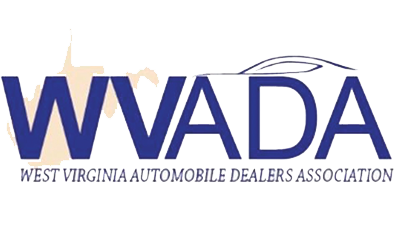Compared to this time last year, inventory levels continue to improve. But we’re still not back to the number of available new and used vehicles pre-pandemic.
Thankfully, there are always new tactics you can implement to help to improve your dealership’s ability to acquire the right vehicles, at the right price. Here are seven that will keep your lot stocked with fresh vehicles in the months to come.
TACTIC #1: Use the Power of “Why Sell”
During the height of the inventory shortage, as retail prices on used inventory soared, many consumers took advantage of favorable market conditions to consolidate the number of vehicles in their family fleet while improving their financial position at the same time.
This shift in selling intent was clearly observable when looking at search trends for keywords like “sell my car” and “sell my car for cash today.” When we fast forward to today, this trend isn’t slowing down. Search volume for related keywords is still elevated well above pre-inventory shortage levels.
That’s why it’s important not to focus your marketing and messaging on just “trades.” When you leave out the option for consumers to sell their car to you without buying one, you’ll be missing a key opportunity to acquire additional inventory.
Be sure to keep your dealership top of mind for consumers off-loading their current ride by combining a connected marketing campaign with your unbeatable local selling experience.
TACTIC #2: Maximize Trade/Sell Engagement on Your Website
If you want your website visitors to know your dealership will buy their car, you have to tell them. So, back up and amplify your “why sell” message on your website and other marketing channels.
Overall, you want to highlight the benefits of trading or selling a car to your dealership. Be sure to include details like providing a guaranteed offer, avoiding the hassle of private sales and saving time and money.
On your website, your trade/sell messaging should be front and center, making that experience only a click or tap away.
Additionally, make sure to maximize your impressions by linking your trade/sell landing page to your main menu, and don’t forget to place a prominent CTA above the fold on your homepage.
TACTIC #3: Provide Consistent Values Across Your Platform
With the proliferation of trade-in, digital retailing and chat widgets being mixed and matched on dealer websites, a growing problem has emerged where consumers receive different values for their vehicle on your website depending on the experience they’re using.
For example, you may have a trade-in widget embedded on a landing page that provides an estimated value range for a vehicle. But the trade-in phase of your digital retailing tool uses a different source of data, resulting in an alternate value provided for the same vehicle.
You’ll build trust by providing a consistent appraisal experience across your website platform. In turn, you’ll increase your chances of acquiring more vehicles.
Take action by appraising a personal vehicle using the same tools on your website that your consumers use. Are you getting matching values across your different tools, or do they differ depending on the experience you’re using?
TACTIC #4: Optimize Your Trade-In Page for Local SEO
When you turn to Google to search using keywords related to selling or trading in a vehicle, you’ll typically find that a majority of the organic results belong to the big-name brands in auto.
However, if you look closely, you’ll see that Google also will provide searchers with links to relevant local dealerships on the first page of results and in the map pack, if you have relevant content published on your website.
It’s not enough to embed your trade-in tool on a basic landing page and expect it to be enough to crack the rankings by itself. You must also optimize and add content to that page that explains your process, and share your message of a local, quick, convenient and trustworthy experience.
TACTIC #5: Market Your Experience Online
Once you’ve refined your trade/sell message and have optimized that experience across all areas of your website, now it’s time to go to market with a strong message targeted to local consumers looking to maximize the value of their vehicle.
You’re probably already running search engine marketing campaigns for your inventory, name, and/or location; but do you have a campaign set up specifically for vehicle acquisition?
With the majority of searches taking place on mobile devices, it’s hard to ignore the fact that the first one or two screens of the search results are sponsored listings. So even if you have an optimized trade/sell landing page that ranks organically, you still want to be able to catch a consumer’s attention right from the start with a well-placed ad and with your dealership’s value propositions.
For the biggest impact, look to increase your trade/sell reach by utilizing your other marketing channels like display, social, and video to ensure that you’re sharing your message with local in-market consumers during all stages of their journey across platforms and devices.
TACTIC #6: Get Trades from Traditional Ads
Just as the inventory shortage was brought about by the pandemic, so was the accelerated adoption of technology that changed consumer behavior. One such technology is the QR code, which had been largely overlooked for a decade, but now has become a common feature in our daily lives.
If you want to make sure you’re giving your dealership every opportunity to acquire more cars, use QR codes in your newspaper, direct mail, and TV advertising. When scanned, they’ll lead a consumer directly to the trade/sell experience on your website.
QR codes not only create engaging offline-to-online experiences, but they also provide a better insight into the ROI of your traditional advertising campaigns — which historically has been challenging to prove.
TACTIC #7: Future-Proof Your Follow Up
It’s important to understand that all the opportunities in the world to acquire a vehicle won’t mean a thing if you haven’t developed a specific follow-up process for your dealership.
Too often, a trade or sell lead gets treated just like any other sales opportunity. It hits the CRM, and then a salesperson or BDC agent picks up the phone to give them a call. More often than not, they leave a voice message, and then the CRM automated email follow-up process kicks in for the next 90 days.
As fewer people answer phone calls from unknown numbers and email continues to become less urgent for consumers to check regularly — texting has become the best way to follow up with all of your leads to get an immediate response.
Closing Thoughts
No matter how your dealership’s inventory is being affected by industry trends, there are always ways to enhance your vehicle acquisition process. Start by looking for simple ways to improve the tactics you’re already embracing. If you don’t see the level of results you want, try one (or all) of these tactics that you haven’t used before, and watch how it will make your acquisition operations more effective for today, and the future.










